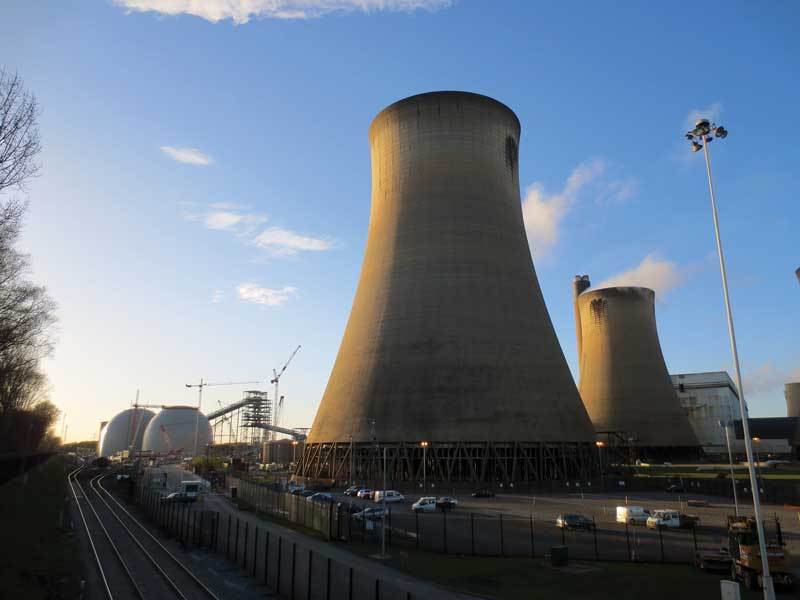The UK's Conversion Diversion







PHOTO: DRAX
November 20, 2015
BY Amanda Saint
The United Kingdom’s new majority Conservative government is letting the world know that improving the country’s environmental sustainability and meeting greenhouse gas emission reduction targets is not high on its agenda. In just six months of being solely in charge, it has announced that funds allocated to growing the renewable energy sector will be cut dramatically, while higher investments in nuclear and fracking will be made.
Since the May 2015 general election, the Department of Energy and Climate Change, led by Parliament member Amber Rudd in her role as energy and climate change secretary, has announced that subsidies available to both large- and small-scale renewables will be reduced or removed completely, and policies that protected them are being changed.
While the Tories were in power in the previous coalition government, they launched a consultation on making changes to the grandfathering policy for future biomass cofiring and conversion projects in the Renewables Obligation. This concluded in January, and the fallout from that means hard times ahead for the biomass industry.
Add to that the changes to the Renewable Heat Incentive, which has helped the U.K. biomass heat industry deliver around 23,000 pro-jects to date, the abolition of feed-in-tariffs, as well as the complete turnaround on the Zero Carbon Homes policy, and it isn’t difficult to realize why plans for new large-scale biomass power plants, as well as small-scale home and business conversions, are being cancelled.
Policy Backtracks
What renewable energy policies have the Tories changed since winning a majority? There are quite a few, but two in particular are having the biggest impact on the future sustainability of the U.K.’s biomass sector.
The first of these is the removal of the grandfathering policy for biomass. Under the guise of cutting bills for “hardworking British families” and citing the falling cost of renewables as meaning that subsidies are no longer needed, Rudd announced that the guaranteed level of subsidy for biomass projects was being removed completely. The reason given for this drastic decision is to prevent biomass generating capacity increasing. Today, there is 2.4 GW of capacity that can convert to biomass if subsidies are maintained, and DECC forecasts that this could increase further to 4.6 MW in 2020 to ’21. Cutting the subsidies in order to prevent this from happening will, they claim, avoid £500 million ($769 million) in costs up to then.
The second policy change drastically affecting the industry is the summer budget 2015 announcement that the exemption for renewable source electricity from the Climate Change Levy would be removed. This means that levy exemption certificates (LECs), which renewable energy generators could previously sell under their power purchase agreements, no longer have any value.
SmartestEnergy is the largest purchaser of independent energy in the U.K., with much of its supply chain working in renewables.CEO Robert Groves says that while the announcement was unexpected and disappointing, the company remains committed to independent generators and to supplying the U.K.’s leading companies with renewable electricity. “We are working through the detail required to transition our business away from LECs and have spoken to our customers,” he says. “As you would expect, there are still many questions unanswered, but we will move forward as quickly as possible.”
Frank Gordon, senior policy analyst of renewable power at the U.K. Renewable Energy Association, says these two major Conservative government policy changes have driven investment uncertainty. “The removal of LECs has had a substantial impact on the profitability of renewable power projects, including biomass power,” he says. “For example, a typical project might lose 5 percent of its total revenue as a result.”
Shrinking the Biomass Sector
With the aforementioned policy amendments undermining both progress already made and the profitability of future projects, the U.K.’s biomass sector is now facing a reversal of fortunes and expects to see a significant slowdown in growing its energy output, alongside many job losses. “The proposed restrictions on investment in renewable energy are already stalling the development of technologies like anaerobic digestion (AD), putting jobs and businesses in the supply chain at risk,” says Matthew Hindle, head of policy at the Anaerobic Digestion and Bioresources Association.
These effects have already been seen at the Eggborough Power Station, a 2,000-MW, coal-fired power plant in North Yorkshire, England, planning to close in March 2016 rather than converting to biomass as once proposed. This means the loss of more than 200 jobs in a region already hard hit by the recession and ongoing austerity measures, which has seen unemployment figures continue to rise in 2015, as they fall in the rest of the country.
Another energy generator in the same region, Drax, has six generating units at its power plant, two of which are fully running on biomass and the third predominantly on biomass. Paul Hodgson, head of media relations at Drax, says two are on the Renewables Obligation protected until 2027, and the recent decisions around the grandfathering policy didn’t affect the utility. “The third is also on the Renewables Obligation and awaiting state a aid decision for a contract for difference (CFD, a long-term contract enabling the generator to stabilize its revenues at a pre-agreed level, and we hope the outcome will be positive.”
Drax is a major good news factor in the U.K. government’s DUKES Digest of United Kingdom Energy Statistics report released in June, which revealed that energy generation from bioenergy sources was 25 percent higher in 2014 compared to 2013. This has mainly been attributed to the conversion of the second unit at Drax power station to dedicated biomass.
Despite the fact that things are still going well for Drax, the overall picture is not quite as rosy for the rest of the U.K.’s biomass sector and its renewable energy industry as a whole, which is now appearing as unattractive to investors. “Because the government removed grandfathering rights from certain biomass projects, serious questions have been raised, alongside wider concerns as to the security of investments in U.K. energy projects, as to whether retrospective changes will soon be made to existing projects,” says Gordon. “At this point, however, it only applies to biomass conversion projects.”
Economic and Environmental Woes
For a while, the outlook for the biomass sector was good. Output was up, jobs were being created, and progress was being made toward meeting 2020 environmental targets. “The U.K.’s AD sector has made enormous strides since 2010, opening our 400th plant this year and employing 4,500 people,cmany in manufacturing and the rural economy,” Hindle says.
But, it’s looking increasingly likely that the good news years are over, at least for now, and the businesses working in the supply chain, as well as in the biomass energy generating game, are waiting with baited breath for the outcome of the Spending Review. At press time, it was soon to be announced.
Frank Aaskov, policy analyst at REA, says the proposed changes to the feed-in tariff scheme will negatively affect the AD market, which depends on generator’s ability to conduct long-term planning. If generators can’t think long-term, investments are delayed, and all of the businesses within the supply chain face the prospect of falling profitability. A real question mark now hangs over the sustainability of many of them.
“The delays to, and lack of auction date for, the CFD scheme will impact suppliers of biomass and technology for biomass combined-heat-and-power (CHP) plants, the projects supported by the scheme,” Aaskov adds. “A more detailed picture of how the fuel suppliers and manufactures will be affected will be possible when the Spending Review results are published.”
As is often the case with government policy, all seems short-sighted. If the investments in the biomass sector were maintained, the environmental and economic impacts could only be positive, many believe. “With the right political support and continuing research and development, AD alone could reduce the U.K.’s greenhouse gas emissions by 4 percent, and we could provide technology and expertise to export to the world,” Hindle says. “We hope that the government will recognize these benefits and give AD the clear backing it needs.”
And anticipating coal plants converting to biomass, new technologies are being developed to help ease the transition and keep costs to a minimum. For example, U.K. company Antaco Ltd. says it creates a fuel that can be burned in existing coal power stations without the need to modify them. The process is called hydrothermal carbonization, and enables low-value organic waste to be turned into a high-value solid biocoal, according to the company, by using a combination of heat and pressure to transforms waste into a carbon-dense material.
And even without the cutting-edge technologies such as Antaco’s, biomass on its own is an attractive and adequate replacement for coal, and has established a good track record. “Biomass has proven to be cost-effective, and a high-value-for-money, low-carbon technology,” Gordon says. “It could help the government reach their targets at lowest cost, particularly as it could immediately reduce coal combustion rates and utilizes major existing infrastructure sites.”
While the biomass sector is innovative, cost-effective, and has the potential to significantly cut the U.K.’s carbon emissions and grow its economy, the government is choosing to cut support, and it’s left many stakeholders wondering what lies ahead. “The U.K. government believes there is enough renewable power capacity under development to meet their 2020 renewable electricity targets,” Aaskov says. “This understanding, however, does not adequately consider that the underdelivery of heat and transport will require additional electricity supplies in order to meet the overall energy target (if one sector fails to meet its target, the others must take up the slack). By undermining continued investment in renewable electricity, the energy target will therefore be put at risk.”
Author: Amanda Saint
Biomass Magazine freelance writer
amandasaintwriter@gmail.com
Advertisement
Advertisement
Upcoming Events





